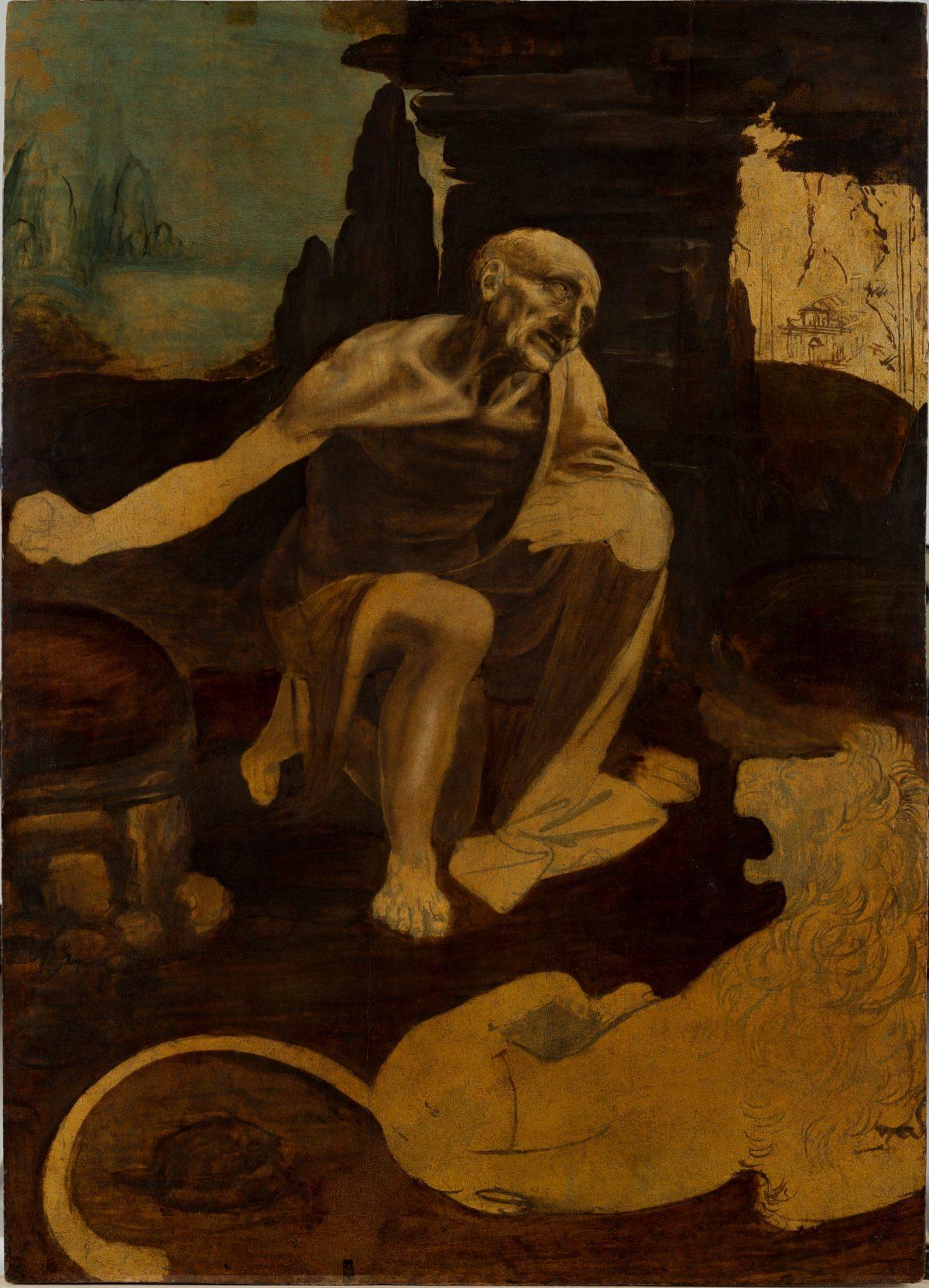NEW YORK—Classical art is not about history—it’s about today. Its transformative power can uplift us, and touch our spirits.
One such example is Leonardo da Vinci’s “Saint Jerome Praying in the Wilderness,” on loan from the Vatican Museums. It’s the singular protagonist of The Metropolitan Museum of Art’s new exhibition, “Leonardo da Vinci’s St. Jerome,” going on through Oct. 6. The exhibition commemorates the 500th anniversary of the artist’s death.
It’s the perfect piece to honor the late master for many reasons. While historians hotly debate the authorship of many of Leonardo’s paintings, this work is one of only six that are not in question. It even has Leonardo’s actual fingerprints on it; he’d often use his fingers and palms to smudge the paint to create a soft focus effect.
“There’s something really pretty touching for a modern viewer to just know that the fingerprints of the artist are there,” said the exhibition’s curator, Carmen Bambach, in a phone interview.
In addition to Leonardo’s literal touch, “St. Jerome” depicts his touching spirit; it may even suggest a different purpose of art altogether—to help us connect with the Creator.
“What is really important is to look at the painting of St. Jerome and allow the painting itself to tell us a great deal about the probable spiritual life of Leonardo,” Bambach said.
Like a spiritual devotee, always striving to be better, the painting is also unfinished and a work in progress. Leonardo started the painting around 1483 and worked on it over the next three decades. From 1510 to 1511, Leonardo focused on sketching anatomical drawings, realistically illustrating the muscular and skeletal structure of a human being. These artistic developments can be seen in his “St. Jerome.”
“[The painting] being unfinished brings us very close to the mind of the genius,” Bambach said. Since St. Jerome was wearing only a ragged cloth, there was an opportunity for the maestro to showcase his command of anatomy. He does so brilliantly, especially in the saint’s head, neck, and shoulders.
It’s still unknown why he never finished the work. “One of the reasons may have been that he considered it very much a work in progress and that he simply became very attached to it himself,” Bambach said.

Solemn Space
The exhibition’s presentation and painting selection pay homage to an old custom. During the Renaissance, at the funerals of great Italian artists such as Michelangelo and Raphael, one of the artist’s devotional works would be displayed.“Saint Jerome Praying in the Wilderness” is displayed alone in the exhibition, “starkly illuminated within an otherwise darkened space in order to heighten the picture’s contemplative dimension, which Leonardo intended,” the exhibition’s press release states.
“The way that we’ve conceived it at The Met is all about creating a chapel-like setting that is a kind of sanctuary for the presentation of this work, which again alludes to the solemnity of a death anniversary,” Bambach said.
The exhibition’s intimate, solitary setting also reflects Leonardo’s unique portrayal of St. Jerome, contrasting with how the saint was often depicted through history. The fourth-century saint is most well-known as an exemplar of Christian morality and for his translation of the Bible from Hebrew to Latin. Many artists, especially during the Middle Ages, would paint St. Jerome in his study, devoutly translating Scripture. He would often be wearing a red cardinal hat and clothing, even though the position did not yet exist in the Catholic order.
Leonardo, however, depicted St. Jerome from a story in the 13th-century text titled the “Golden Legend,” a collection of hagiographies, or biographies of saints. From the text, St. Jerome wanders the desert as a gaunt ascetic; he comes upon a lion with a thorn in its paw. The saint removes the thorn and gains a companion for life.
In Leonardo’s “Saint Jerome Praying in the Wilderness,” St. Jerome sits inside a cave, beating his chest with a rock, a common practice of penitence. Such rituals were performed to remove sins of the flesh, which Jerome infamously indulged in before becoming a Christian. At his feet lies his companion, the lion. St. Jerome, in a semiconscious state, looks upward at a cross.
“What Leonardo decided to do was to pare down the story completely,” Bambach said. “[It’s about his] state of reverie … It’s this engagement with a crucifix that is the subject really of the saint’s mystical vision.”
What I see from Leonardo’s artistic choice is a religious figure and sentiment, unfettered by the form of the Church. This is a depiction of St. Jerome in his most raw, naked state, figuratively and literally: He’s not adorned in the Church’s garb; and he’s simply entranced by divinity, connecting directly with Christ. The saint’s spirit, and connection to God, is gravitational and grounding. It speaks of the devotion of the painter, as much as to St. Jerome himself.
“Now, as a historian myself, it is difficult for me not to see that Leonardo was an intensely spiritual artist,” Bambach said.
J.H. White is an arts, culture, and men’s fashion journalist living in New York.






Friends Read Free